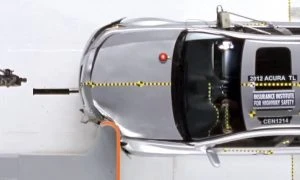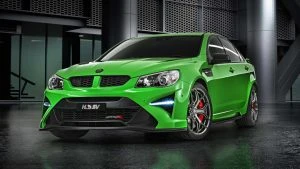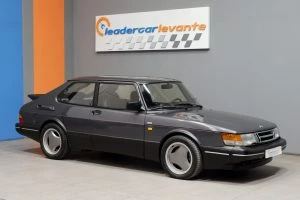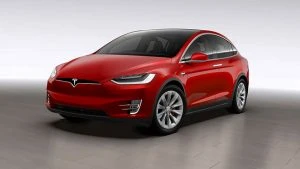Manufacturer News
Small Overlap Crash Test

The influx of all the amazing new electronic safety aids and crash avoidance systems found on-board new cars has been exceptional. There is no doubt that these systems are helping save lives and minimising injury. There has been one part of the latest car crash testing regime that the Insurance Institute for Highway Safety (IIHS) has brought in as part of their testing in order to help make cars safer.
The IIHS is an independent, non-profit scientific and educational organization dedicated to reducing deaths, injuries and property damage from motor vehicle crashes through their ongoing research and evaluation, and through the education of consumers, policymakers and safety professionals. The IIHS is funded by auto insurance companies and was established back in 1959. Its headquarters is in Arlington, Virginia, USA. A lot of what the IIHS does is crash test cars in a variety of ways to gather data, analyse the data, and observe the vehicles during and after the crash tests to quantify how safe each car is. The results and findings are published on their website at IIHS.org. Car manufacturers have been forced to take these tests seriously because, at the end of the day, these results matter and will affect car sales as the public become informed about how safe their cars will likely be in the event of an accident.
Since 2012, the IIHS has introduced a couple of new tests that they put the vehicles through to see how safe they are in an event of small overlap collision. The driver-side small overlap frontal test was brought about to help encourage further improvements in vehicle frontal crash protection. Keeping in mind that these IIHS tests are carried out using cars with left-hand-drive, the test is designed to replicate what happens when the front left corner of a vehicle collides with another vehicle or an object like a tree or utility pole. This crash test is a challenge for some safety belt and airbag designs because occupants move both forward and toward the side of the vehicle from the time of impact. In the driver-side small overlap frontal test, a vehicle travels at 40 mph (64 km/h) toward a 5-foot-tall rigid barrier. A Hybrid III dummy representing an average-size man is positioned in the driver seat. 25% percent of the total width of the vehicle strikes the barrier on the driver side.

Most modern cars have safety cages encapsulating the occupant compartment and are built to withstand head-on collisions and moderate overlap frontal crashes with little deformation. At the same time, crush zones help manage crash energy to reduce forces on the occupant compartment. The main crush-zone structures are concentrated in the middle 50% of the front end. When a crash involves these structures, the occupant compartment is protected from intrusion, and front airbags and safety belts can effectively restrain and protect occupants.
However, the small overlap frontal crashes primarily affect a vehicle’s outer edges, which aren’t well protected by the crush-zone structures. Crash forces go directly into the front wheel, the suspension system and the firewall. It is not uncommon for the wheel to be forced rearward into the footwell, contributing to even more intrusion into the occupant compartment, which often results in serious leg and foot injuries. To provide effective protection in these small overlap crashes, the safety cage needs to resist crash forces that haven’t been amplified, concentrated on one area or aren’t tempered by crush-zone structures. Widening these front-end crash protection structures does help.
The IIHS also performs the passenger-side small overlap frontal test. The passenger-side test is the same as the driver-side test, except the vehicle overlaps the barrier on the right side. In addition, instead of just one Hybrid III dummy, there are two — one in the driver seat and one in the passenger seat.

Automotive manufacturers initially responded to these driver-side small overlap test results by improving vehicle structures and airbags, and most vehicles now earn good ratings. However, IIHS research tests demonstrated that those improvements didn’t always carry over to the passenger side. Discrepancies between the left and right sides of vehicles spurred the IIHS to develop a passenger-side small overlap test and begin issuing passenger-side ratings in 2017.
It is good that vehicle safety always seems to be on the improve and, with each new model, the new-car buyer can expect a safer vehicle. Thanks to crash testers like the IIHS, ANCAP and Euro NCAP, we are experiencing safer cars on our roads.
A Moment of Silence

Holden HSV
Over the last decade there have been a few car manufacturers who have pulled out of selling cars in Australia. But, as those leave, there have also been numerous new marques who have arrived on the scene, which is great to see. Let’s not forget the old faithful marques, who are the manufacturers like Toyota, Honda, BMW and Porsche who have been selling cars in Australia for three decades or more. So what’s changed over the last ten years?
Over this last decade we have had to say goodbye to Holden – perhaps the saddest exit. The company was founded in 1856 as a saddlery manufacturer in South Australia, only to be wound up over the last year or so. The Holden roots in Australia have run very deep.
Chery made its arrival in 2011 and stuck around for a few beers and was off again in 2016. Chery once sold Australia’s cheapest new car for under $10k.
During the last decade, Dodge wrapped things up as well, though we still see the RAM logo in the form of the RAM Trucks that are sold new in Australia. A RAM Truck is the king of the Ute/light truck world.
Equally as sad, for some, as the vanishing of Holden has been the cessation of the awesome line of HSV (Holden Special Vehicles) and FPV (Ford Performance Vehicles) muscle cars. Oh how things change when people get a whiff of the climate change spin and big money opportunities with such amazing “clean” vehicles like EVs.
One luxury marque that made a brief appearance was Infiniti. Only recently, we’ve waved goodbye to this very classy and elegant line of cars that for some reason struggled to make their way into a buyer population who were stayed in their buying habits. Some of the Infiniti cars were seriously quick, had unique style and were reliable and comfortable.
2012 saw Opel opening many showrooms across Australia. The new Opel Astra and Opel Insignia cars were quite stylish cars, though they only managed a few sales. They too had a few beers and then folded up a year or two later.
Proton cars also came onto the scene in 2012 and sold a few hundred cars, however the aging models did not sell well in 2017 at all, so they were axed. There are rumours of them making a comeback with a new range of cars under Geely’s ownership.

1991 Saab 900 Turbo 16 S
Another very sad day in the last decade of the Australian and global motoring industry was when Saab were forced to wrap up. I miss their individuality and the range of powerful four-cylinder, turbocharged engines. Australia has also said goodbye to Smart cars, a range of tiny city cars that were made by Mercedes. They never sold well.
The new popular car marques that have entered the Australian car market over the last few years has been: Genesis, Great Wall, Haaval, LDV, Mahindra, MG, RAM Trucks and Tesla. Most of these are of Asian origin.

Tesla
The 2021 World Car Of The Year Is…
Volkswagen’s ID.4. The electric SUV is the German brand’s fifth WCOTY after: 2013 World Car of the Year – Volkswagen Golf, 2012 World Car of the Year – Volkswagen UP!, 2010 World Car of the Year – Volkswagen Polo, 2009 World Car of the Year – Volkswagen Golf VI.
It’s still unclear as to whether it will make its way to Australia. What will be unavailable is a 77kWh battery, offering a range of up to 520 kilometres. Power is rated as 150kW and torque at 309Nm providing a 0-100kph time of 8.5 seconds. The rear is where the engine is located. Battery charge from a 120kW DC source can provide 320 kilometres of range in a half hour, and the 11kW charger built in can provide 53 kilometres in an hour.

It’s expected that a dual-motor version will be released with power bumped to around 225kW. Chassis wise, it’s a bespoke EV design, and on a length of 4,580mm, it sits neatly between VW’s Tiguan at 4,486mm and the Tiguan Allspace, a seven seater and 4,701mm in length. Crucially, it will offer cargo space of 543L (rear seats up) to 1,575L (seats folded), offset against the Tiguan’s 615L/1,775L and the Allspace’s 230L and 1,655L. Up front is a cargo area of sorts, with the cargo being the 12V battery for the ID.4’s ancilliaries and accessories, plus the various cooling system equipment parts.

ID.4 will be built across three continents and in five factories, highlighting the still “Dieselgate” beleaguered company’s move to a stronger EV presence in a market that is growing worldwide.
Ralf Brandstätter is the CEO of Volkswagen, and he firmly believes in positioning this EV as a mainstream model “with the potential for significant volumes.” Those volumes, he says, are in in Europe, China, and North America. The ID.4 will also “play host” to a range of related brand vehicles from Skoda, Audi, and Cupra.
Future versions of the ID.4 are said to include all-wheel drive and a choice of both batteries and engines. These include a 109kW, 125kW, 129kW or 150kW rear-mounted electric motor with a 52kWh battery the power source for the first two, and a 77kWh battery for the latter. This battery
will also be the source for two all-wheel drive versions, with either 195kW or a mooted GTX packing the 225kW engine.

Kleva Kluger Is A Hefty Hybrid.
Toyota’s near twenty year old Kluger nameplate is joining the Toyota family of Hybrids. The big petrol powered machine, which has never had a diesel option, weighs in at a hefty two thousand kilos (dry) in its forthcoming Hybrid form. It will become the eighth Hybrid for the Japanese company.
The Kluger will come in 2WD or AWD petrol, or AWD Hybrid, and the Hybrid has the Toyota 2.5L petrol, whilst the Kluger stays with the familiar 3.5L V6 capacity in a new engine block. There willbe three trims levels, with the GX 2WD petrol starting from $47,650, the GXL 2WD petrol from $56,850, and Grande 2WD petrol from $68,900. Move to AWD and pricing runs at: GX AWD petrol from $51,650,
GXL AWD petrol from $60,850, and Grande AWD petrol from $72,900. The Hybrid range starts from $54,150 for the GX AWD hybrid, $63,350 for the GXL AWD hybrid, and $75,400 for the Grande AWD hybrid. Premium paint is a $675 option, with the Grande offering a rear seat entertainment system at $1,500. Sean Hanley, the Toyota Australia Vice President Sales and Marketing, said the addition of a hybrid option to one of Australia’s favourite family SUVs demonstrated Toyota’s commitment to driving sustainability forward. “The popularity of SUVs continues to grow and the new Kluger hybrid models mean that families can have all the space, comfort, refinement and versatility of a large SUV with a low environmental impact. In addition to that, the stylish new look, improved safety and high level of advanced technology makes the Kluger the perfect SUV for the modern family.
Sean Hanley, the Toyota Australia Vice President Sales and Marketing, said the addition of a hybrid option to one of Australia’s favourite family SUVs demonstrated Toyota’s commitment to driving sustainability forward. “The popularity of SUVs continues to grow and the new Kluger hybrid models mean that families can have all the space, comfort, refinement and versatility of a large SUV with a low environmental impact. In addition to that, the stylish new look, improved safety and high level of advanced technology makes the Kluger the perfect SUV for the modern family. Power comes from the 2.5L four and a pair of electric motors up front, backed by a single rear mounted engine. Toyota says the Hybrid’s combined power is 184kW, with the petrol engine contributing 142kW itself. Torque isn’t quoted for the Hybrid, however 242Nm is the 2.5L petrol engine’s figure and emissions of 128g/km. Jump to the 3.5L and 218kW is backed by 350Nm with drive being passed through a new eight speed auto.
Power comes from the 2.5L four and a pair of electric motors up front, backed by a single rear mounted engine. Toyota says the Hybrid’s combined power is 184kW, with the petrol engine contributing 142kW itself. Torque isn’t quoted for the Hybrid, however 242Nm is the 2.5L petrol engine’s figure and emissions of 128g/km. Jump to the 3.5L and 218kW is backed by 350Nm with drive being passed through a new eight speed auto.
The Hybrid has an electronic continuously variable transmission (e-CVT). The e-Four AWD system allows up to 100 per cent of drive to be sent through the front wheels or up to 80 per cent through the rear, depending on the conditions being driven in. This Dynamic Torque Control AWD system, which effectively disconnects the rear diff when AWD isn’t required, will be available in the GX and GXL. The Grande also receives a torque vectoring system, splitting torque to left or right as required. There will be three driving modes too, with Eco, Normal, and Sport offering a breadth of choice. Also included in the AWD models is a terrain adjustable program for Rock and Dirt, Mud and Sand soft-roading. Underneath the wheelhouse, the new Kluger is built on an updated chassis, called Toyota New Global Architecture or TNGA platform. The wheelbase is increased by 60mm longer wheelbase as is the overall length. It’s also somewhat broader than the current 2021 model for more interior room and stability on road. The suspension has been redesigned with multilink front and rear setups, with better overall ride quality, better handling, and better behaviour under braking conditions. Bigger discs at 340mm front and 338mm add their presence.
Underneath the wheelhouse, the new Kluger is built on an updated chassis, called Toyota New Global Architecture or TNGA platform. The wheelbase is increased by 60mm longer wheelbase as is the overall length. It’s also somewhat broader than the current 2021 model for more interior room and stability on road. The suspension has been redesigned with multilink front and rear setups, with better overall ride quality, better handling, and better behaviour under braking conditions. Bigger discs at 340mm front and 338mm add their presence.
An exterior revamp sees a lessening of the heavily squared-jaw look, with slim LED headlights and taillights, with the front fenders rolling inwards slightly at the top for a visual weight reduction. There is a new line for the rear wheel arches, with a sinuous curve rolling up from the doors that reminds of the current IndyCar rear structure. Wheels themselves will be 18 inch alloys on the GX and GXL, and bespoke Chromtec 20 inch alloys for the Grande. The increase in space means increased comfort and Toyota adds in sliding and 60/40 split centre row seats, with the seven seater having 60/40 split fold also. Trim material finish has gone up a grade with soft touch dash materials, a higher quality cloth trim in the GX, and faux leather for the GXL. That grade also has gained heated front pews. GX and GXL have an 8.0 inch touchscreen, Android and Apple compatibility with DAB and Bluetooth, plus satnav for the GXL along with tri-zone climate control. Grande adds in a sunroof, HUD, and an 11 speaker audio system from JBL.
The increase in space means increased comfort and Toyota adds in sliding and 60/40 split centre row seats, with the seven seater having 60/40 split fold also. Trim material finish has gone up a grade with soft touch dash materials, a higher quality cloth trim in the GX, and faux leather for the GXL. That grade also has gained heated front pews. GX and GXL have an 8.0 inch touchscreen, Android and Apple compatibility with DAB and Bluetooth, plus satnav for the GXL along with tri-zone climate control. Grande adds in a sunroof, HUD, and an 11 speaker audio system from JBL.
GX has dual zone, auto headlights and rain-sensing wipers as standard. Five USB ports make for family friendly smart usage. The increased wheelbase adds up to increase the cargo and third row space as well. Also upped is safety, with Toyota’s Safety Sense gaining traffic sign recognition, intersection turn assist, and emergency steering assist across the three, backing up the already substantial safety package.
The current expected release date for Australia is June.
